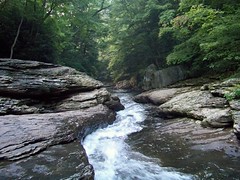You are charged with deciding the fate of Washford Meadows. A sleepy poor farming community of less than 200 people who have lived 2 hours outside of Metro Atlanta on family farms that have been passed down for generations. This land is some of the most pristine wilderness the state of Georgia has left to protect or at least that is what the wealthy urbanites of Atlanta, who are pushing for the state park to be created wrote on the marketing pamphlets. However, the residents of Washford Meadows have refused to sell and it appears that if a state park is to be created the government will have to use eminent domain 1 laws to take the land from the residents and they’ll only be compensated a 1/3 of value that their land is currently appraised at. You are selected by the governor of Georgia to decide Washford Meadows fate. You must chose to protect the wilderness by turning it into a state park using eminent domain or you may chose to let the residents of Washford Meadows keep their lands and leave the wilderness unprotected. Be prepared to defend your choice.
This is the conundrum I present my students in my environmental sociology class. Conundrums are an excellent teaching tool because they force students to own their value hierarchy and it represents a more real life situation where at least one party has to lose2. Furthermore, no matter what answers your students give you can always devil’s advocate against them making this a great small group exercise. The valuable environmental sociology lessons that are easy to pull out of student’s answers are the social construction of “wilderness”, the connection between humans and the natural world, and the role inequality plays in environmental policy.
Inherent in the plan to turn Washford Meadows into a state park is the idea that nature worth saving lies outside of urban areas. That nature is something “out there” that urbanites have to drive to go see. This loaded idea makes it easier for city dwellers to litter, dump oil in sewage systems, and any other type of environmental degradation, because, “hey, this isn’t the ‘real’ environment and besides this city is a dump. Who cares?” When students in the past have said something to the effect of, “we have to protect what little environment we have left” I asked them why Atlanta or even our own urban community wasn’t an environment worth saving? Along these same lines other students asked in class why the rich urban folks didn’t create more green spaces inside Metro Atlanta?
Washford Meadows also teased out how students viewed human needs and environmental needs. In class we had talked about how intertwined the two are, but how our culture and political leaders often present them as disjointed. “I’m all for saving the environment, but we can’t put environmental needs above human needs,” is a common statement students make. Pressing students to see how they’ve falsely dichotomized human and environmental needs can help everyone in class grasp this key concept of environmental sociology. This false dichotomy is present in most of the pro-business arguments out there today. We are told that we can grow the economy OR address global warming, for example. The frailty of this argument is laid bare after this activity.
Inequality is also a in play in this scenario. Wealthy, educated, politically connected urbanites are using their influence to take land from the impoverished families living on Washford Meadows. My students have really grasped the connection between inequality and environmental policy when I frame the connection with this scenario. Students decry the treatment of the poor families, but balance their treatment against the interests of the many vs. the few. It is easy to get students to debate individual land owner rights versus the interests of society and the rights of nature.
This activity has worked really well for me and even if you don’t teach environmental sociology it can serve as a model for teaching using conundrums. I’ve attached a copy of the handout I gave my students for this discussion. Download it here.
Footnotes:
1. This isn’t how eminent domain laws work, but the idea of eminent domain is well understood by students. After the activity I tell my students about the inaccurate portrayal of eminent domain laws.
2. If there is a downside of this activity it is that it forces dichotomized thinking. So its crucial that when students think of ways the two parties could compromise (e.g. a conservation easement), that you strongly reinforce the creative thinking.


Comments